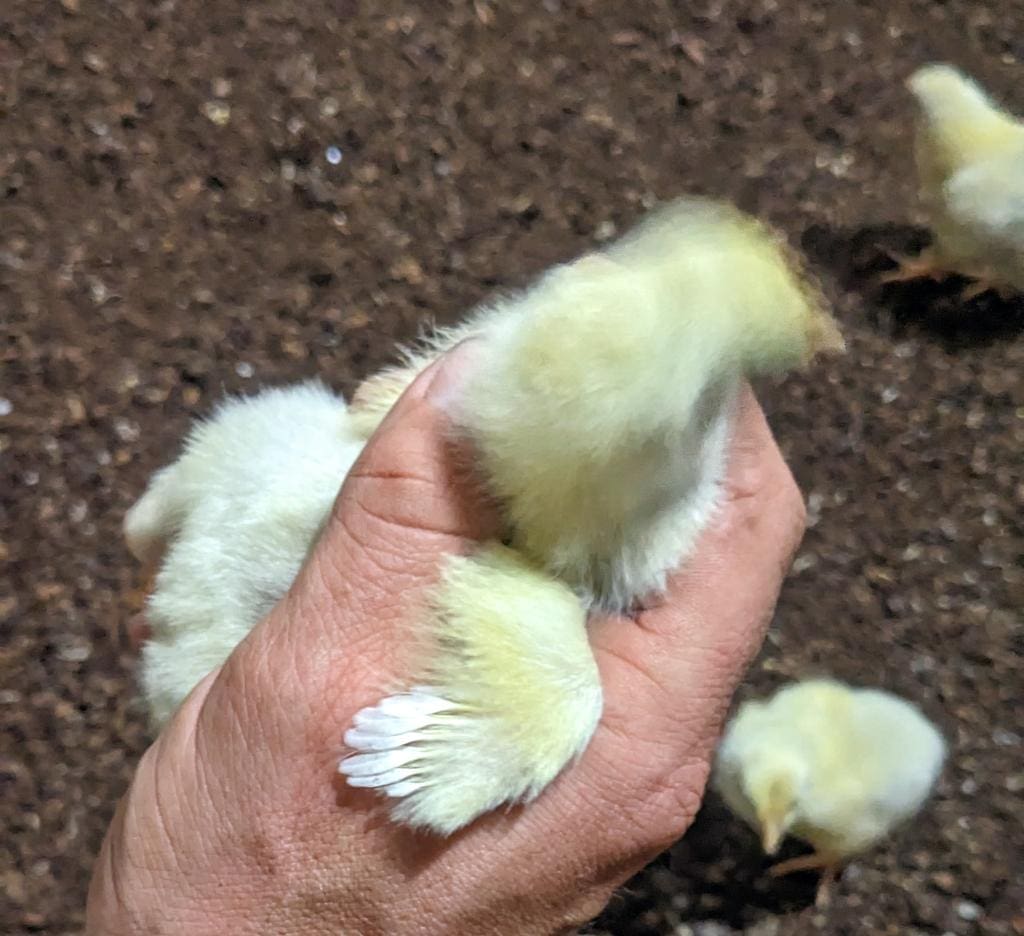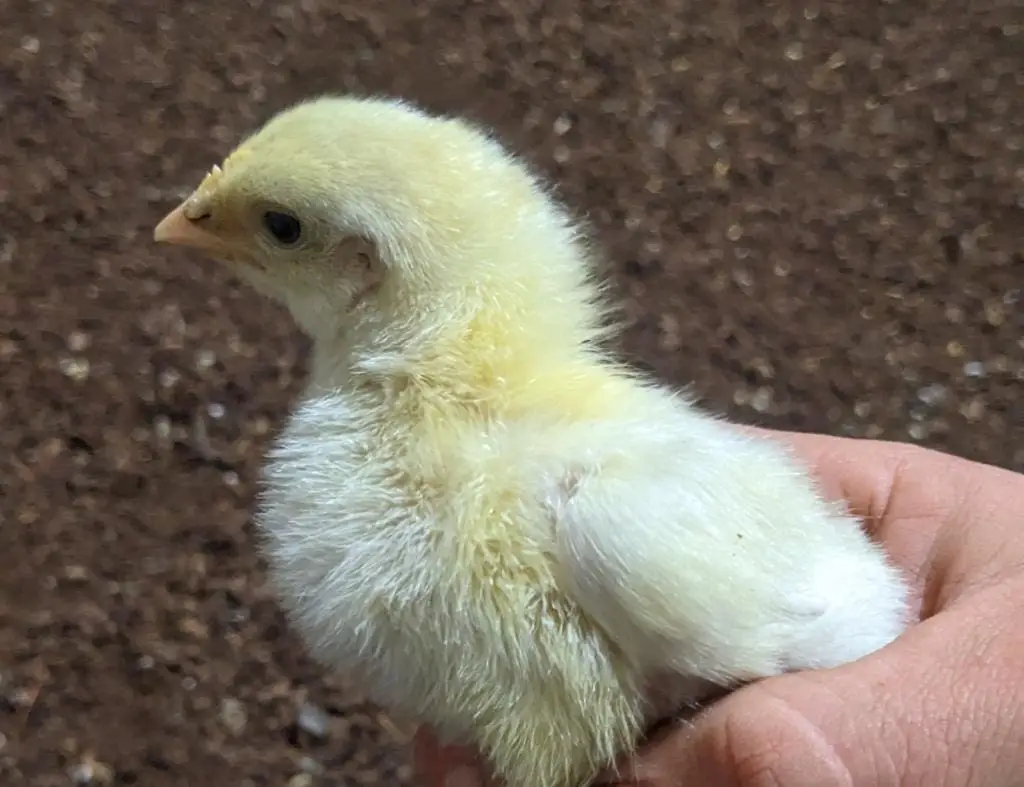This week we began the spring cycle of chickens, with the first batch of newly hatched chicks going into our brooder. We normally time our hatch dates to start earlier in the month, but this year it made more sense with our family schedule to delay things a few weeks.
The weather is fickle, as April always is, with temperatures fluctuating between the mid 80s and the high 20s. These little chicks are too tender to be out on pasture just yet, so we keep them in the brooder for about three weeks to allow them to get to the stage in their development where they can regulate their own temperatures.
The chicks begin to grow quickly, but the most noticeable change in their appearance comes with their new feathers. Just out of the egg, they’re covered in a soft yellow fuzz, but within a few days their larger white feathers begin to grow in. Chickens first grow these feathers on their wings, then their tails, and soon the white feathers wrap around their abdomen. The fuzz on the head is the last to go. Below, you can see this young cockerel with the beginnings of flight feathers. He’s just five days old, so he doesn’t have much to show for himself yet, but give him time…

Unlike waterfowl like geese and ducks, where their young ones often join their parents swimming shortly after hatching, a cold, wet chick will die quickly. The combination of cold and wet, but the wetness in particular, just wipes them out. So our first goal in a brooder is to keep the chicks warm and dry. Infrared spot heaters maintain their sleeping areas in the 90 degree range, with some gradation between cooler and hotter spots for chicks to choose the warmth level that suits them. As some chicks are busy eating, drinking, scratching, and grooming, others are sprawled out under the heaters, snoozing. After a few days of consistently warm temperatures, we begin dropping the heater thermostats by a degree or two, slowly weaning the chicks off the heaters and preparing them for the temperatures they’ll encounter when we turn them out to pasture.
I suppose we all have some mental marker we use to flag the start of a new season. Maybe your spring begins based on a seasonal botanical change, like the day you notice that the tulips or the forsythias all have bloomed. But for us, there’s nothing betokening seasonal transition as much as the chirping of the first chicks. It is delightful, and, candidly, a little terrifying. We enjoy the chicken season, but it certainly is a long, hard pull, with lots of work, lots of checking and double checking, lots of early mornings and late nights. But it is what we do, and we’re glad to live our lives surrounded by birds all through the pasture season.

Best wishes to all for a wonderful spring.

4 thoughts on “Back to the Brooder”
I live in a cohousing community and usually do my work-share in the gardens… but this year I’m training to care for the chicks. I have many spring milestones associated with plants – whether the first sprouts of garlic (yeah!) or the flowering of mouse-cress (oh dear) – and I look forward to having, as you do, the chirping of the first chicks as a sure sign of spring.
That’s interesting, thanks for sharing. I’m glad to hear that you have this opportunity.
Things on our farm unfold independently, somewhat in isolation from the consumers because our customers are located at some remove. But the integration of food right into the middle of living has always seemed like an ideal arrangement. Even if the scale of production could never fully support the community, it seems like having everyone involved in food production would do a lot to keep folks tethered to the physical realities of the world.
I’ve always had it in the back of my mind that a small community could feed a substantial flock of hens and a few pigs just off everyone’s kitchen scraps and garden waste. It wouldn’t produce enough feed to replace 100% of the community’s eggs or pork, but it would substantially offset the amount of feed grown or purchased for the animals, and it would be more efficient on the entropy scale compared to just composting the food scraps.
Good luck with the new chicks!
Thanks Jeanne. They are continuing to do well this week.